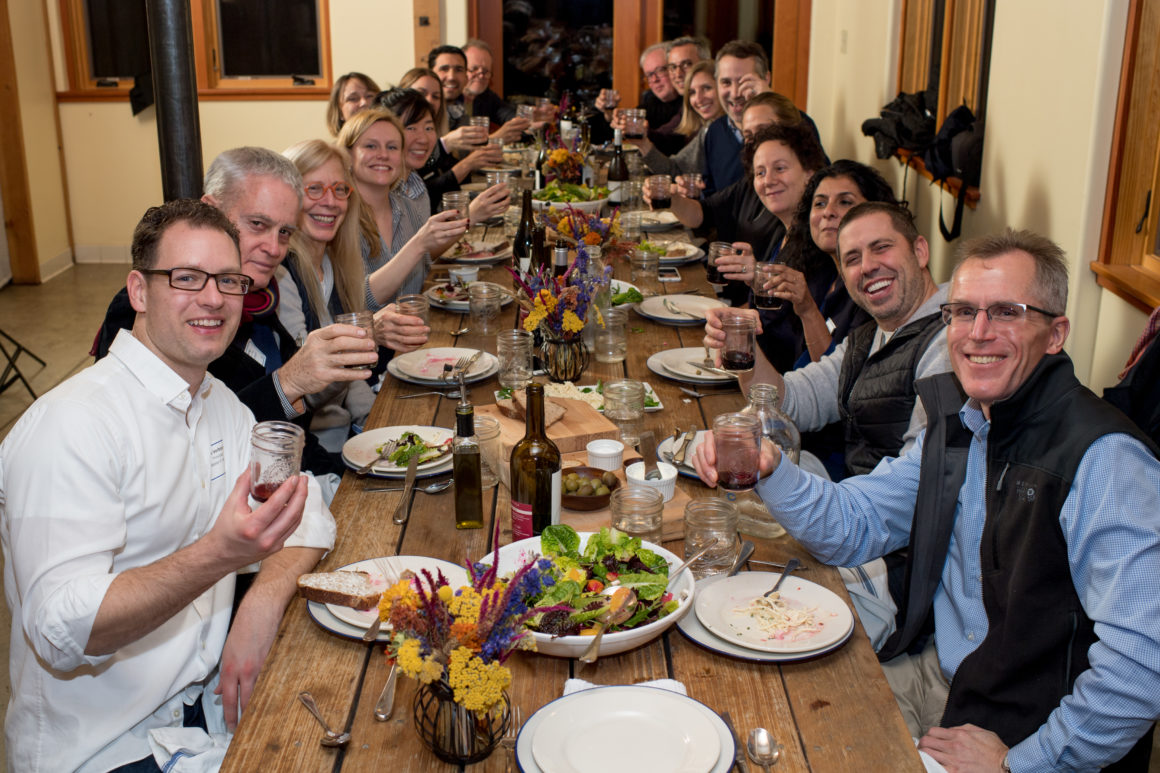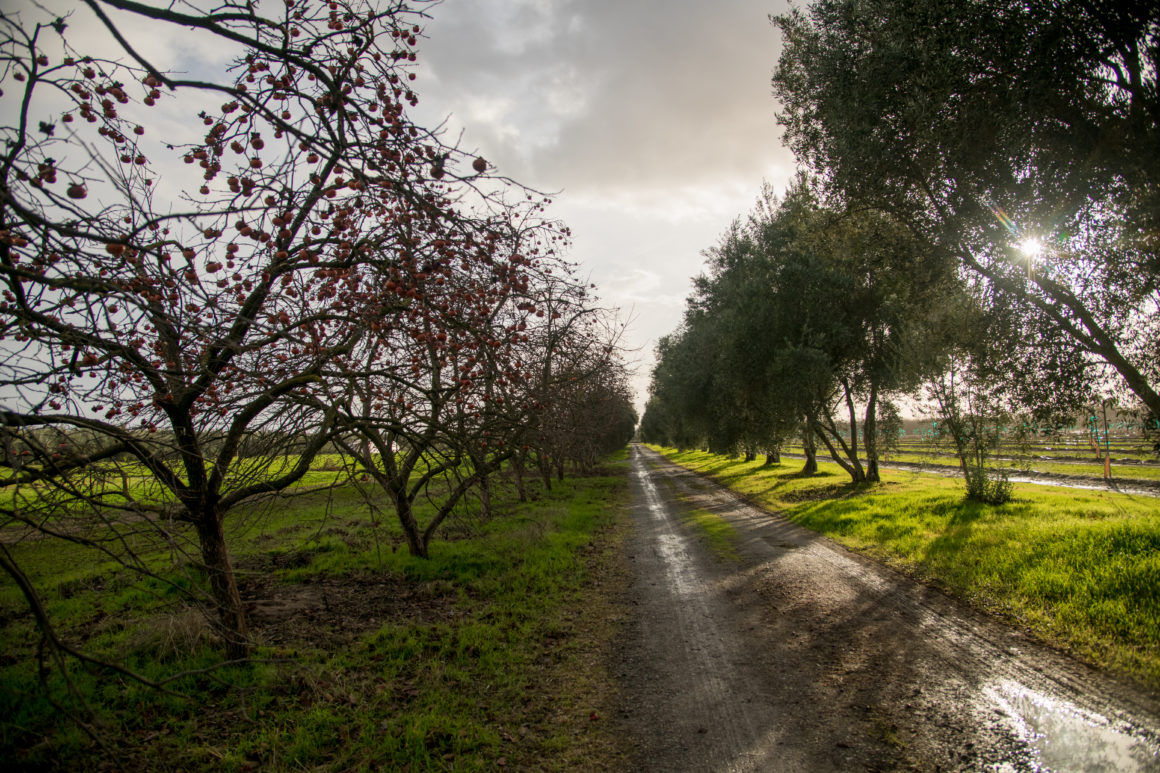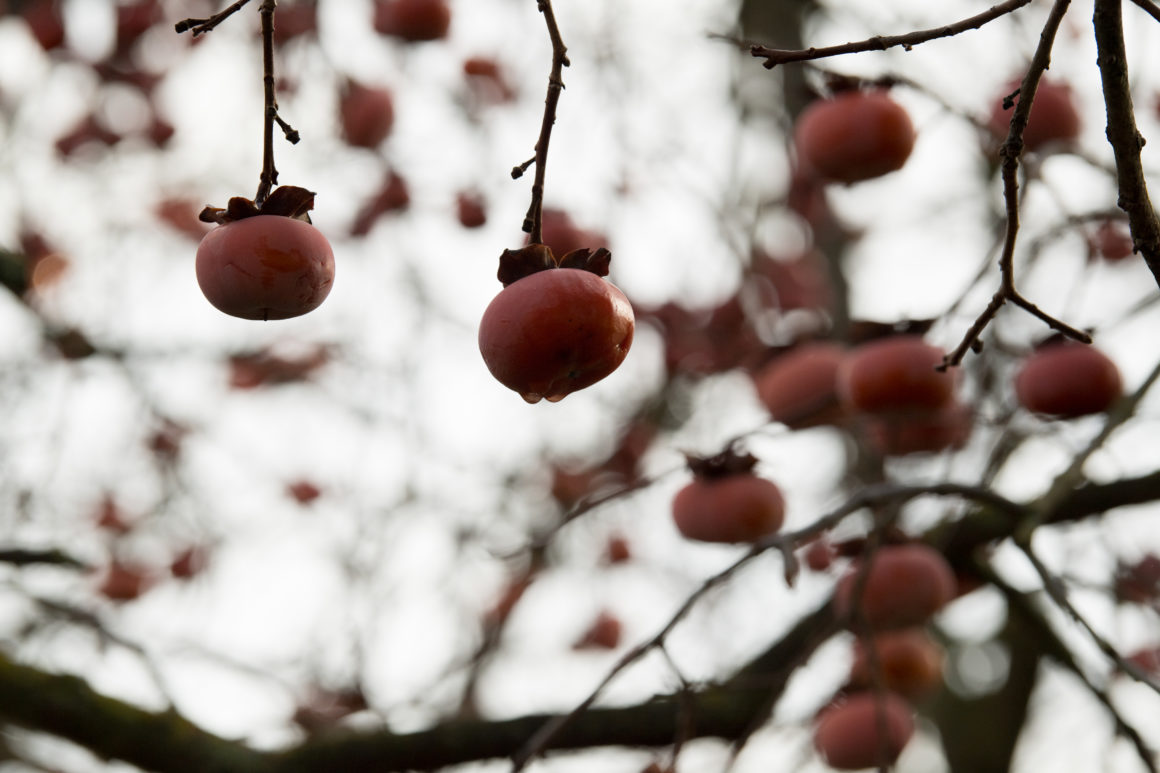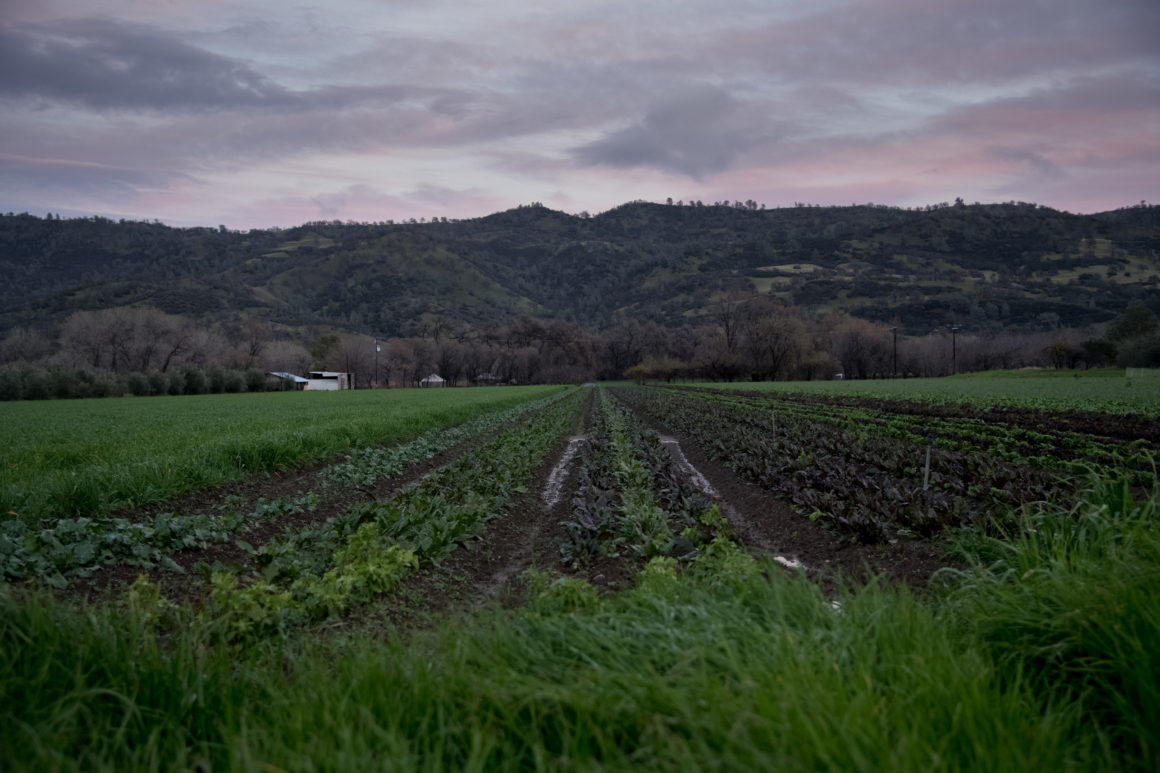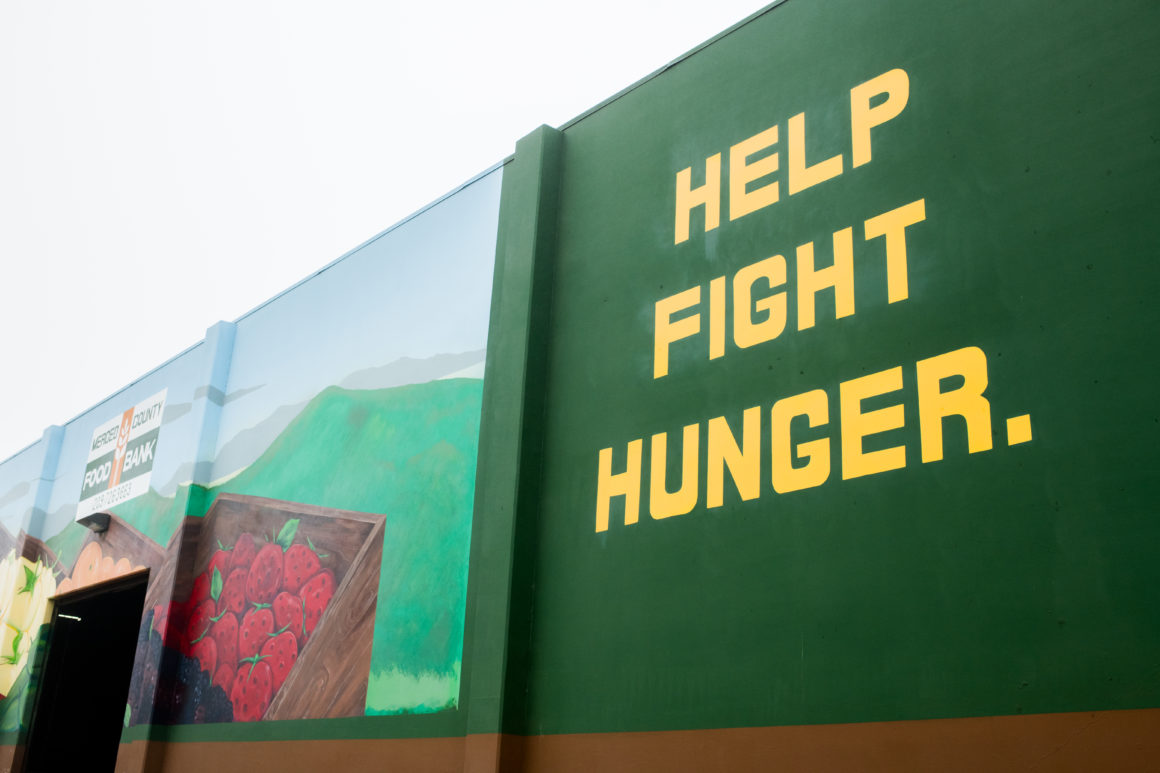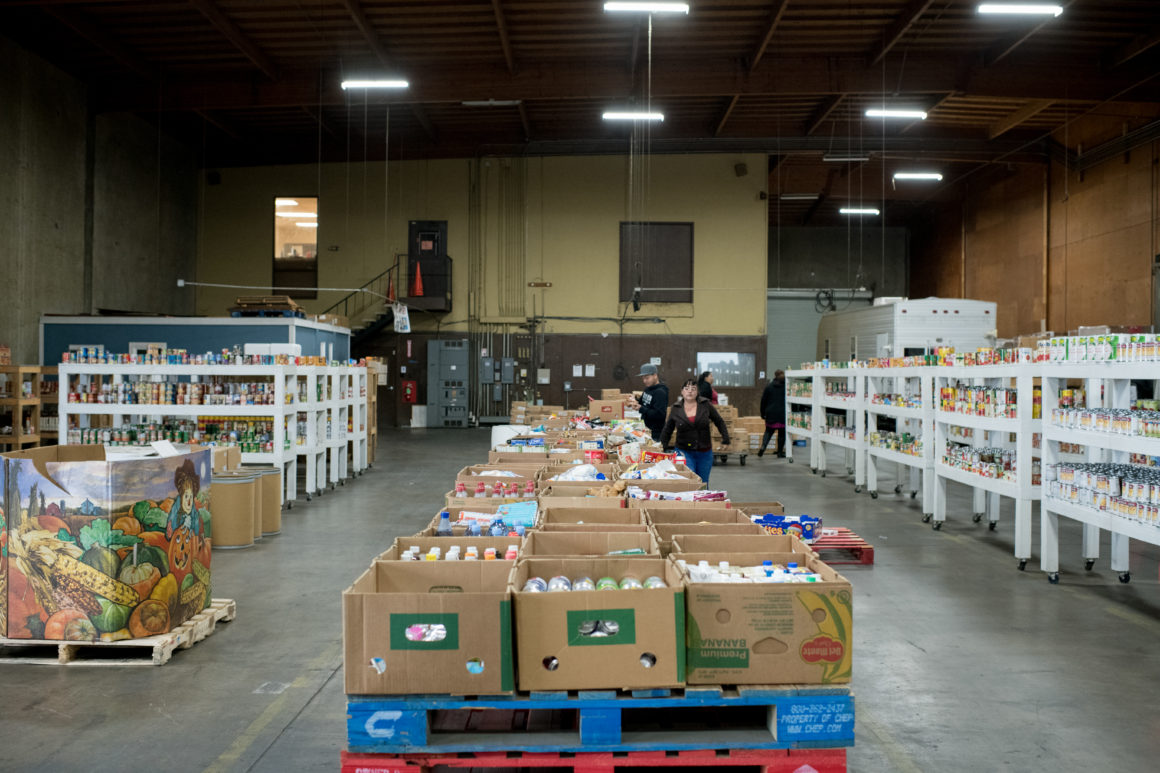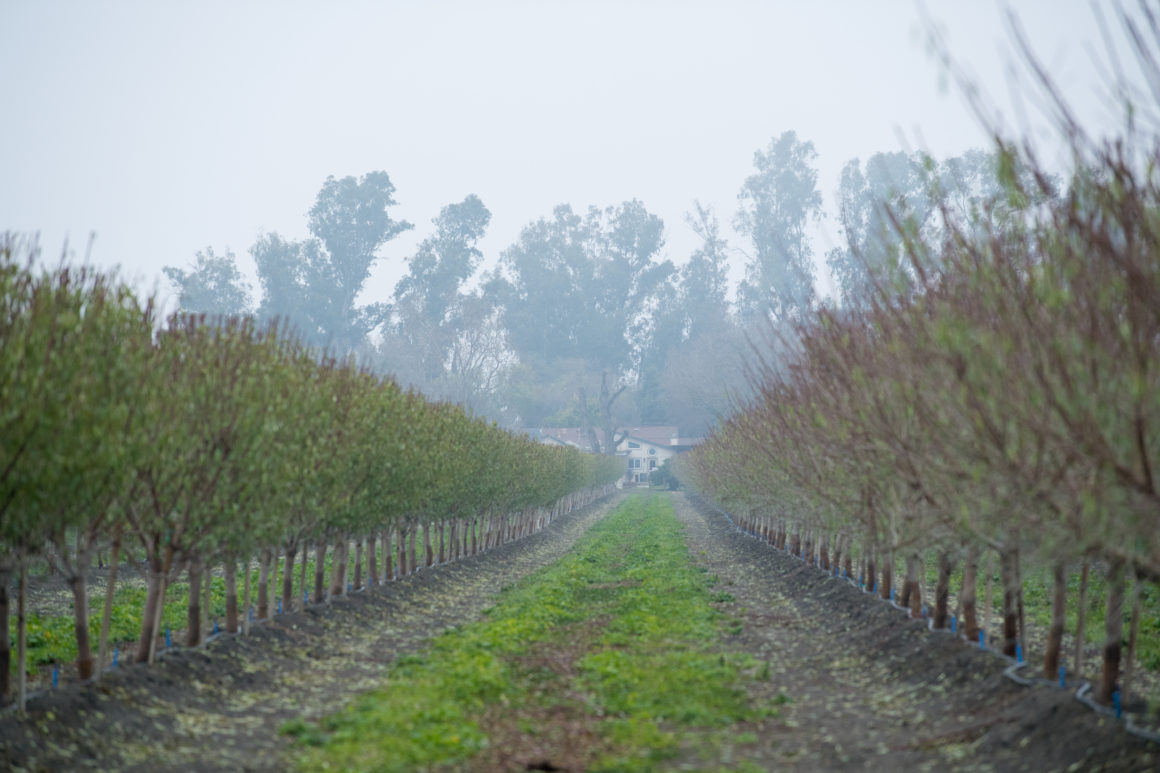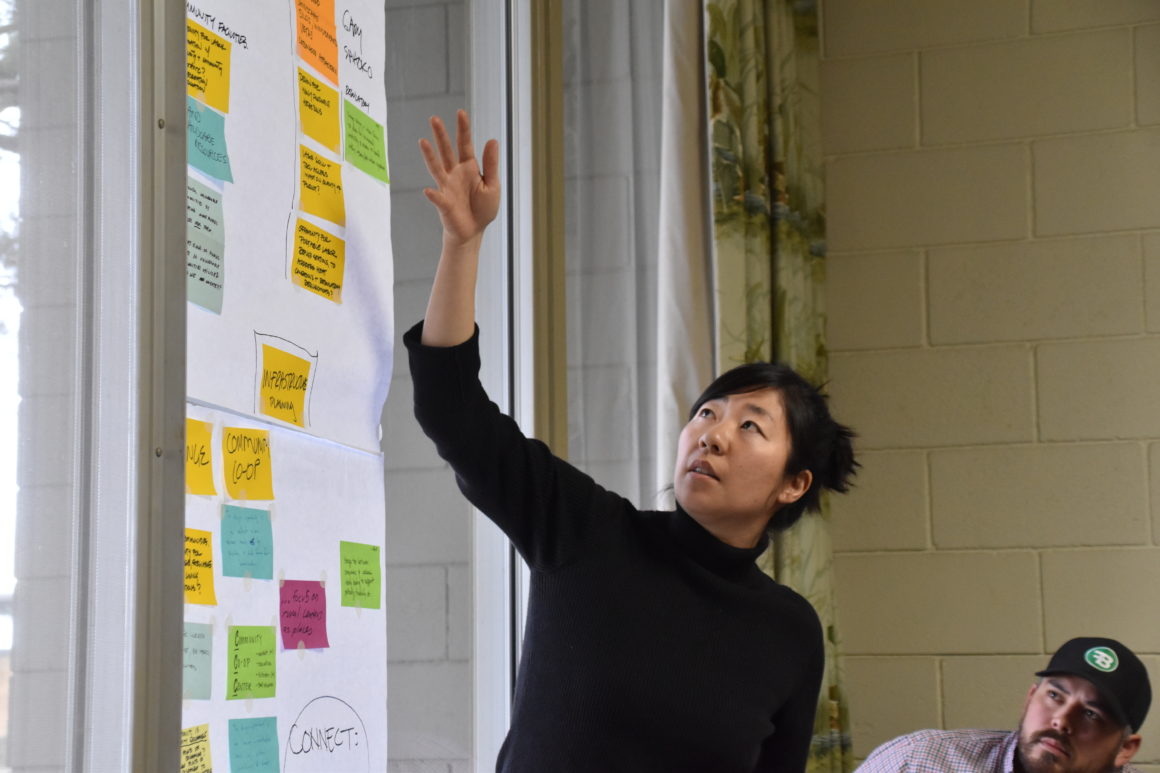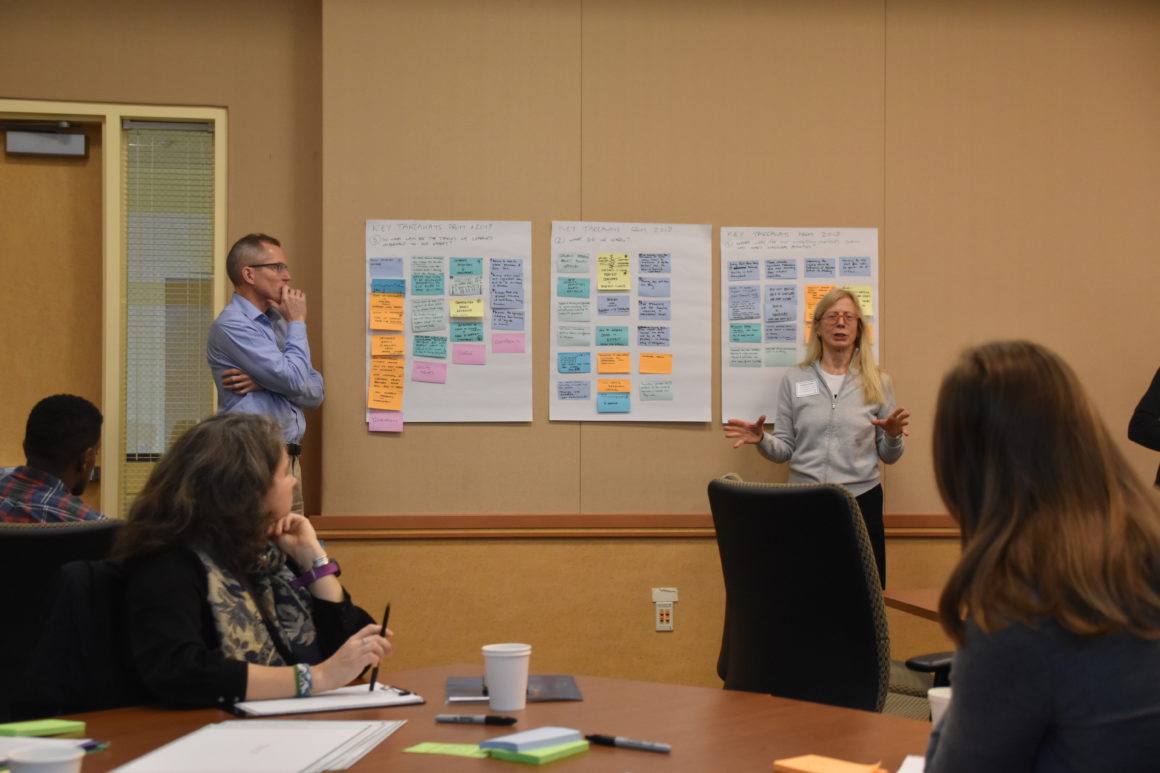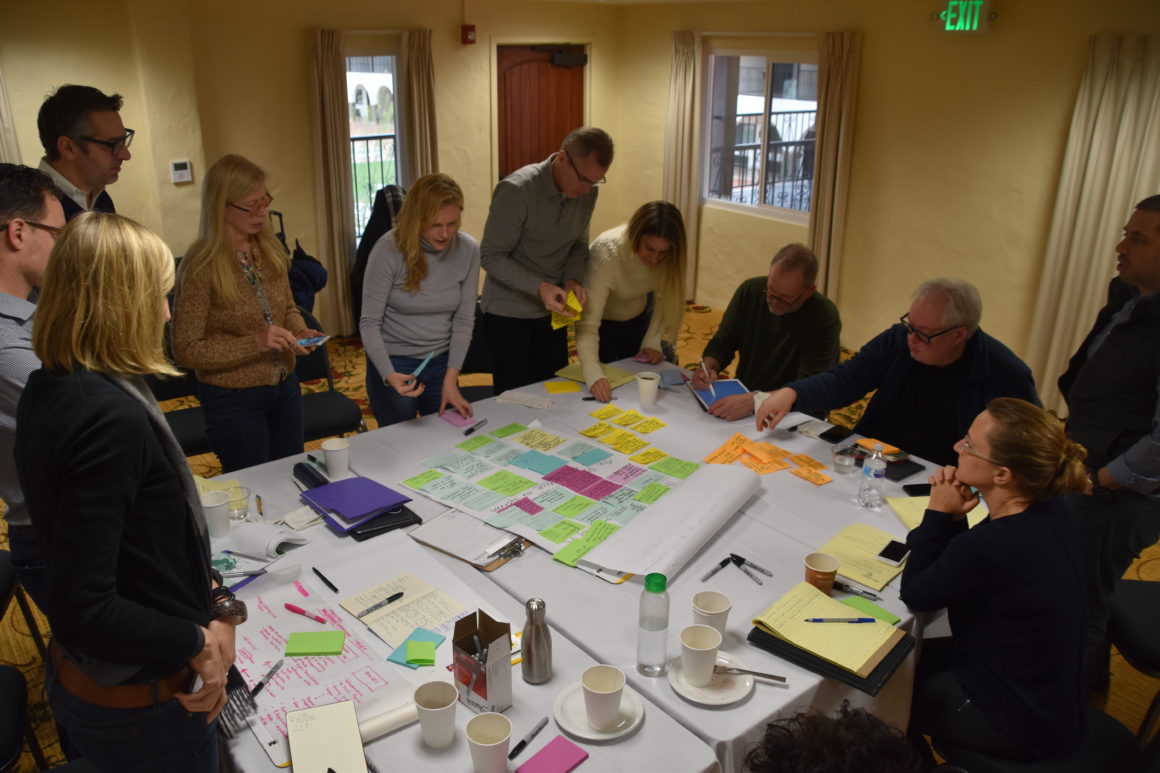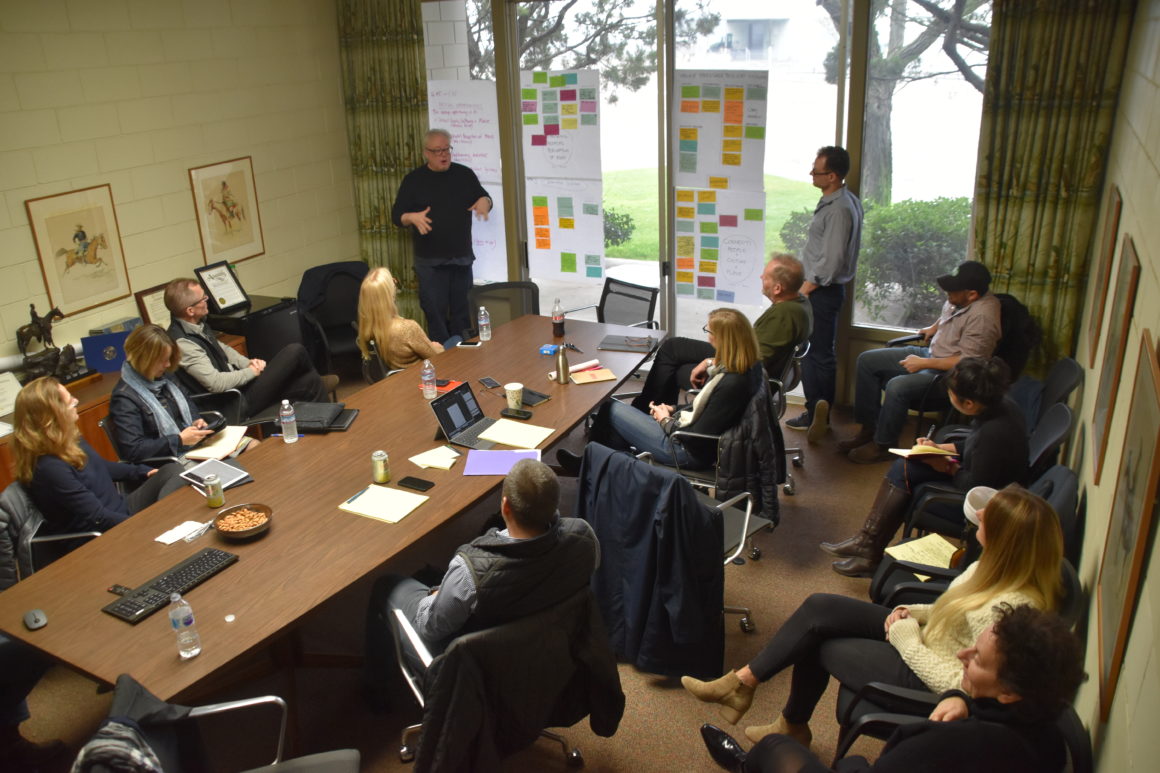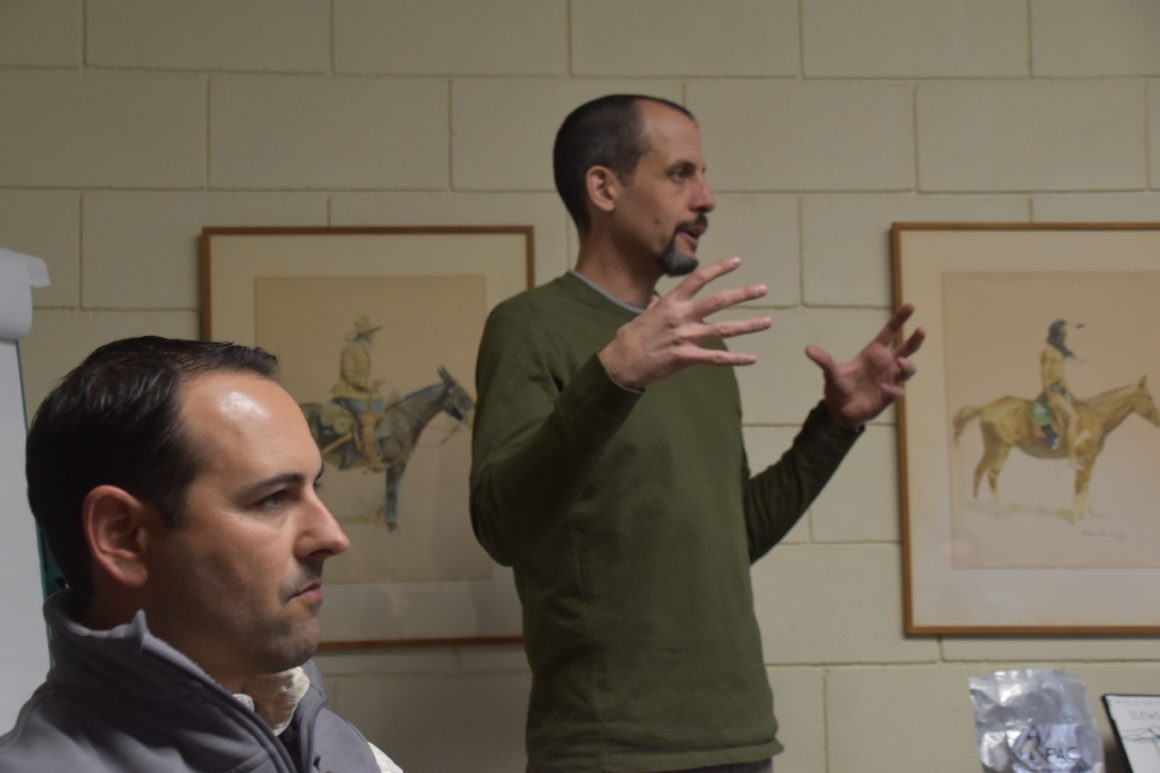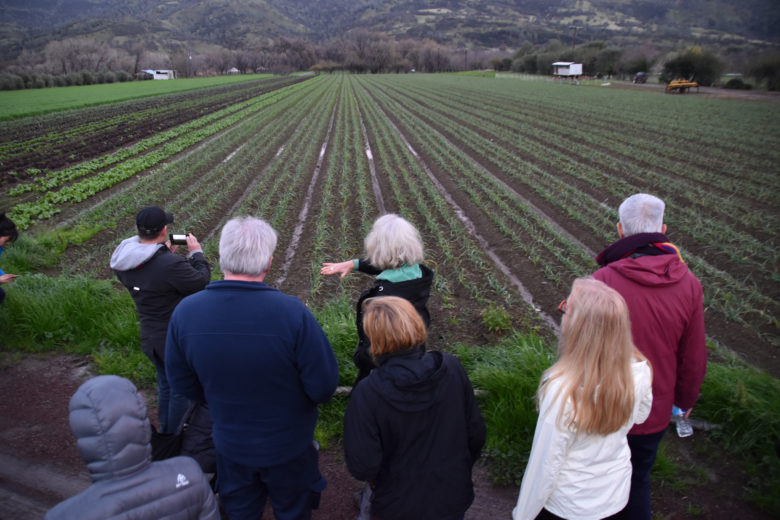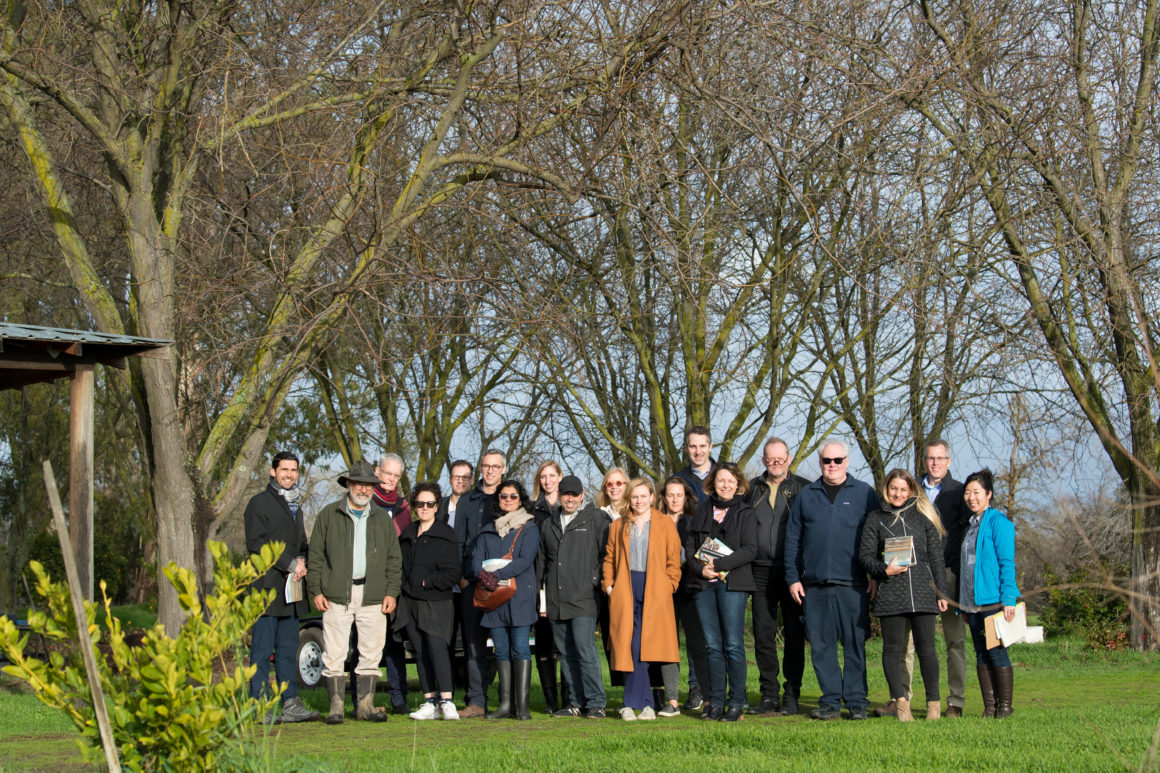
All photos by Lisa Richmond unless otherwise specified.
Preface by Van Alen Institute
As climate change compromises food production and access the world over, “breadbaskets” like California are among the most vulnerable regions, primed as case studies to explore innovations and alternative strategies. From Jan 9th – 11th, 2019, Van Alen’s Climate Council returned to California’s Central Valley for the second installment of a two-part trip, investigating the potential of design to foster a food system capable of carrying us into the future.
Building on their exploratory visit in July of 2018, which surveyed the three major components of food production – water, labor, and land – the Council dove deeper into the social dimension, understanding the complex web of relationships and dependencies that comprise the food system and envisaging design solutions in response to what they heard and observed.
To probe this topic, the Council covered 200 miles over three days, engaging with a range of stakeholders and intensive workshopping. Through the myriad opportunities they identified, four principle themes emerged around ways to advance sustainable food-systems solutions: Change People’s Perception of Food; Promote Alternative Industries; Imagine Predictable, Resilient Systems; and Connect People and Culture.
Van Alan invited Sahoko Yui, PhD, lecturer in the University of California Davis and University of California Berkeley Department of Landscape Architecture and Artist in Residence at Blake Garden, to join the Climate Council’s expedition and chronicle their learning. Below is an account of the Council’s journey – their conversations and revelations – as they sought to apply design thinking to a system, under-explored by this critical discipline.
Intro
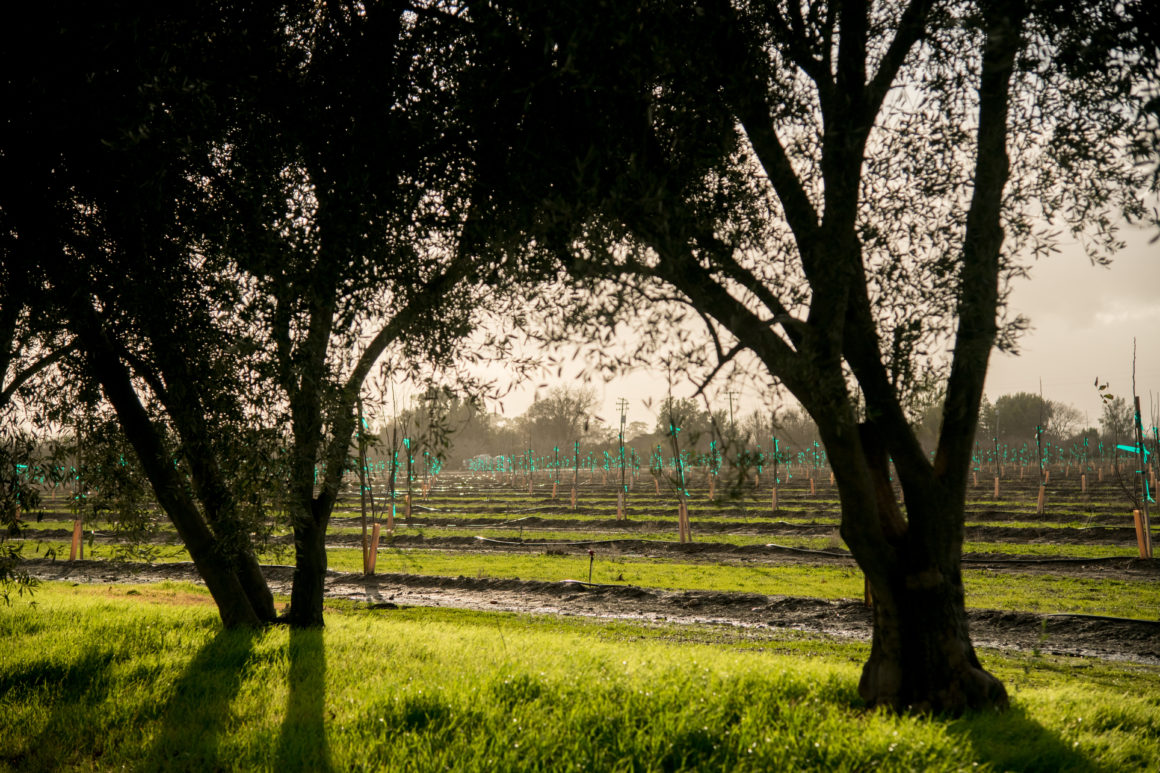


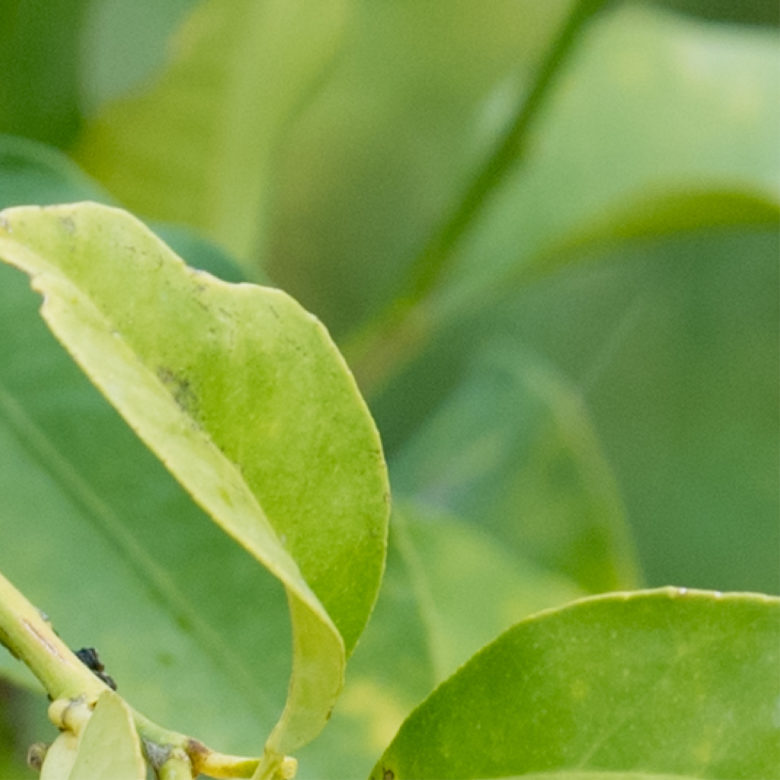



In October 2018, the Intergovernmental Panel on Climate Change released a special report warning that the impacts from global temperatures rising 1.5 degrees Fahrenheit were far worse than previously expected and would have dire consequences for all sectors of the economy, hitting vulnerable communities the hardest. The IPCC report was one of 12 significant climate reports released last year, 11 of which were published after the Van Alen Climate Council’s first visit to California in mid-July. While their focus varied from health, food security, environmental policy, and extreme events, the key takeaway was the same for all—we must act boldly and swiftly to reverse the trajectory and prevent further negative consequences of climate change. Not only were there a record number of groundbreaking reports published between the two Climate Council visits, but the nation also experienced the impacts of hotter temperatures and more intense storms. In November, California fought off two wildfires, making this one of the deadliest months of fire in the state’s history. In October, Florida and other southeastern states hurriedly evacuated their homes to flee Hurricane Michael, one of the strongest storms in Florida’s history.
While the dramatic weather events and natural disasters attracted media attention, the climate reports indicated a need to investigate slower changes and impacts on our food system, public health, and economy. The Central Valley was a good fit as a case study for the Climate Council. A recently published article in 2018 by a UC Merced research team led by Dr. Tapan Pathak identified the key ways that climate change will impact the agricultural system in California. Among them, reduced chill hours and increased crop water stress could affect the sustainability of many crops. Climate change will also affect agricultural production through modifications in the biology and ecology of insects, pathogens, and weedy competitors. Furthermore, in 2018 a study by Chandrakala Ganesh and Jason A. Smith in the American Journal of Public Health found that climate change will also affect the public health of communities engaged in agriculture, such as rising temperatures causing more heat-related hospitalizations and injuries, exposures particulate matter increasing negative health outcomes such as cardiovascular illnesses and exacerbation of asthma symptoms. The study also raised the concern of mental health issues from climate-related disaster trauma, describing the phenomenon of solastalgia as “a sense of desolation and loss of identity that an individual experiences as their familiar home environment changes, becomes uninhabitable, or hampers their livelihood,” which affects more people in place-specific professions, such as the farming and fishing industries. In addition to environmental sustainability and public health, the economic impact of changes in agriculture in the Central Valley due to climate change are projected to be in the billions. The California drought cost an estimated loss of 2.7 billion dollars in revenue and a loss of 21,000 jobs at its peak.
Design professionals, like those who comprise the Van Alen Climate Council, are well-positioned to tackle complex climate change issues because of their training and experience creatively applying systems thinking to local contexts. Founded in 2018, the Climate Council is an interdisciplinary group of designers whose purpose is to investigate critical climate-related issues, inspire change-making design projects that can improve the environment and promote healthy communities, advocate changes in mindset regarding climate issues, and guide Van Alen’s innovative public programming, research, and design competitions. The Climate Council’s research trip to the Central Valley last summer involved visits to places associated with various facets of the region’s food industry, ranging from a large-scale farm to a tomato processing plant (read more about the previous Climate Council visit here). Participants learned about advanced technologies and ambitious policies applied to increase efficiency and production output while responding to the realities of a changing climate.
During the return visit, the Climate Council built upon members’ foundational knowledge and delved into the social dimensions of the food system, focusing on the farmer, the farm worker, and the consumer. Over a three-day period from January 9 to 11, the Climate Council held discussions with food systems experts, met with various farmers, visited a food bank, and heard the stories of immigrant farm workers. A set of questions emerged for the Climate Council to explore: in what ways are the people who comprise the food system—the farmer, the farm worker, and the consumer—impacted by climate change? How can interdisciplinary design professionals enhance the security and resilience of communities that support or are conversely supported by the agricultural industry?
Key takeaways from the January visit to the Central Valley centered around how policy and industrial ag have changed agricultural farming practices, how farming has affected the Central Valley environment and community, and how climate change will stress an already fragile community and environment:
The economics and practices of farming have changed significantly in the past 30 years, and farms of all scales have had to significantly shift their farming practices to keep up with industrialized ag, environmental policies, and increasing demand to feed a growing population.
While the Central Valley provides one of the greatest resources to the nation’s food access and quality, the investment into the communities is not commensurate with the value that the Central Valley brings.
Climate change exacerbates the social and environmental challenges of a community that is already struggling with drought, food insecurity, poor air and water quality, and high unemployment.
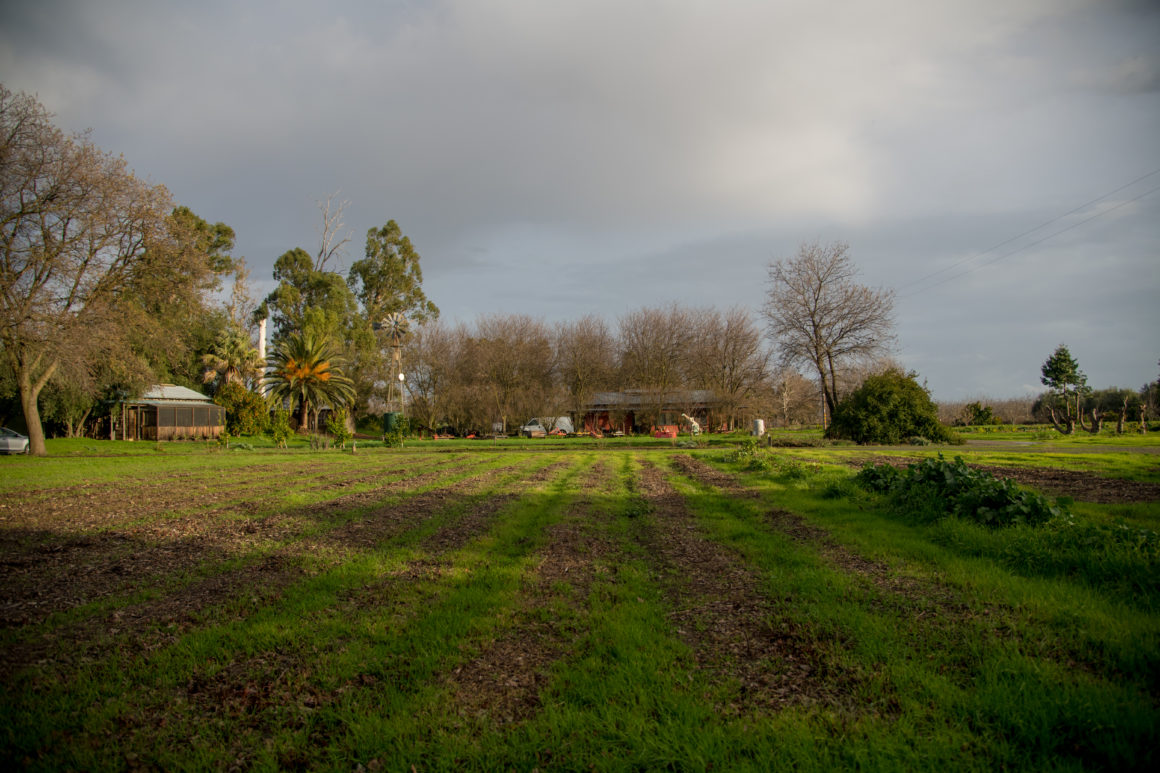


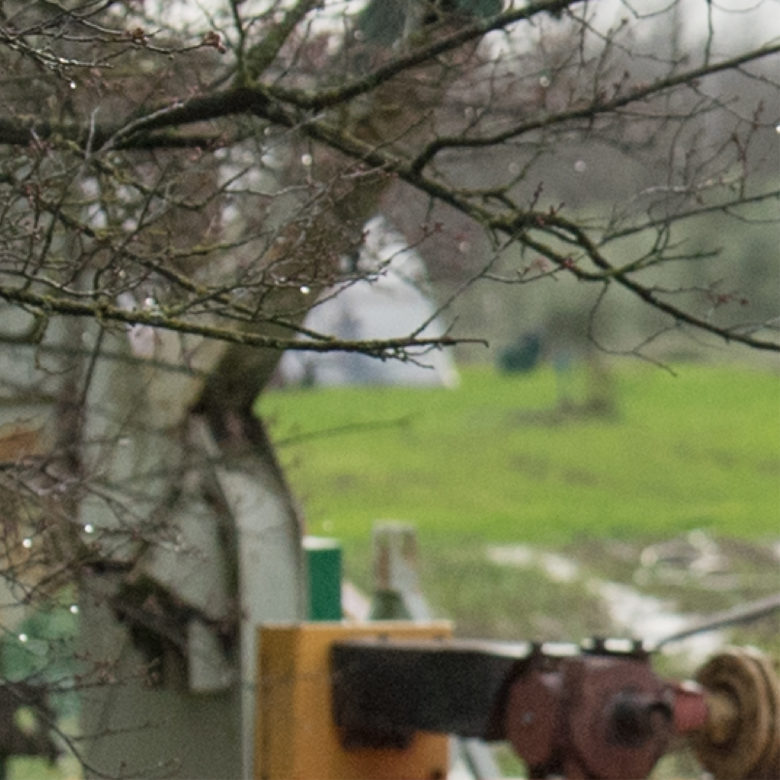



The first day of the trip kicked off with morning workshops to revisit the learnings of the July visit and expand upon the members’ knowledge by engaging a range of experts in discussion. The workshop included the 16 Climate Council participants and 15 experts spanning the subjects of science, food, water, energy, and policy (a full list of attendees at the bottom).
The purpose of the workshop was to provide a foundation for the upcoming three-day visit by revealing the interconnectedness of the food system and hone the line of questions that would guide subsequent discussions. Dr. Ned Spang, assistant professor at the UC Davis Food and Innovation Institute, and Dr. Austin Brown, executive director at UC Davis Policy Institute for Energy, Environment, and the Economy, echoed the need for a holistic, systems thinking approach: “You can’t talk about issues surrounding food production, access, and consumption without talking about the built environment, land use, transportation, energy, and how land is allocated to all these resources,” Ned Spang said. “We have to think about the connectivity of all these systems, you can’t take it in isolation.” Dr. Spang hosted the event “From Farm to Table and Back Again” with Congresswoman Chellie Pingree to discuss the topic of food waste. They both argued for an interdisciplinary approach to tackle food waste issues. From the resource perspective, Dorene D’Adamo, a member of the State Water Resources Control Board, reminded us of the need to think about fisheries; in December 2018, her board passed a controversial plan to pump water from the San Joaquin River from farms to cities to revive struggling fish populations.
While well-known effects of climate change on food, such as higher temperatures and drought were discussed, the group also learned lesser-known facts, including those pertaining to the effects of weeds and food waste. Dr. Lynn Sosnoskie, a weed scientist, raised the need to address the impacts that “insects and weeds are going to have on agriculture because the types of practices available to control these organisms aren’t going to be the same under changing climate conditions.” Kyle Pogue, environmental program manager at CalRecycle, pointed out that there are six million tons of food waste in California every year, mostly going to landfills. “How do we reduce, prevent, and reuse food waste?” he asked. On the consumer side, Martine Boswell, CalRecycle environmental scientist, argued that addressing the issue of food waste requires a deeper awareness of what’s going on in all sectors of the food system and identifying the hot spots of food waste. “Why do we have cosmetic standards for food in the first place?” she asked.
Others shared the importance of acknowledging the community, how they are impacted, and the significance of local and external perspectives. Dr. Marc Schenker, distinguished professor at UC Davis Department of Public Health Sciences, argued that “California ag wouldn’t exist without farm workers –immigrant farm workers. We need to recognize that and the health disparity that exists.” And Gail Wadsworth, executive director of California Institute for Rural Studies, shared the importance of learning from the local community. “These people are working on the land,” she said, “and they are all aware of what’s happening, and they are impacted by it the most.” Furthermore, Sara Tiffany of Community Alliance with Family Farmers (CAFF) added that the Climate Council needed to “keep a scope that allows for the nuance between different kinds of farms and farmers and the unique challenges they face.”
The Climate Council visited farms ranging in size from 20 acres to 1,100 acres, and we found that each had their own hurdles and differing philosophies on how to handle those challenges. We also noted that no one knew more about the land better than the farmers, farm workers, and the community that lived there. Geography PhD candidate Mayra Sanchez reminded us that climate change “is not always something that is catastrophic and sudden. It changes and impacts communities differently, over long periods of time, and at different scales.” This thought is particularly important and echoed the need to think and act proactively rather than reactively. John Andrew, assistant deputy director of the California Department of Water Resources, emphasized the importance of having outside perspectives like that of the Climate Council and getting to know one another’s assumptions and perspectives. “It is important for people like me who are deep into these issues to talk to people like you who are not traditionally looking at these issues and see what kind of questions you all are asking.”
Throughout the discussion, experts offered insights and highlighted opportunities. Dr. Mark Cooper, assistant professor at UC Davis Department of Human Ecology, emphasized the importance and significance of this research in California because “climate change is going to transform California agriculture in unprecedented ways in the next 10 to 20 years. The exciting thing about looking at this in California is how to answer these agricultural questions outside of California. The intensity of these problems are going to start manifesting more and more elsewhere outside of California.” California is one of five regions in the world with a Mediterranean Climate, all of which are key agricultural hubs and many which are already experiencing climate change impacts according to Wolfgang et al 2018. There is an incredible opportunity to think about the global impact of the role of design in food and climate change. Bob Segar, UC Davis campus planner, suggested that the Climate Council use its strengths in placemaking to improve food security. “There’s an opportunity we can program places in a way that brings diverse communities together around food, food access, and healthy food together.”
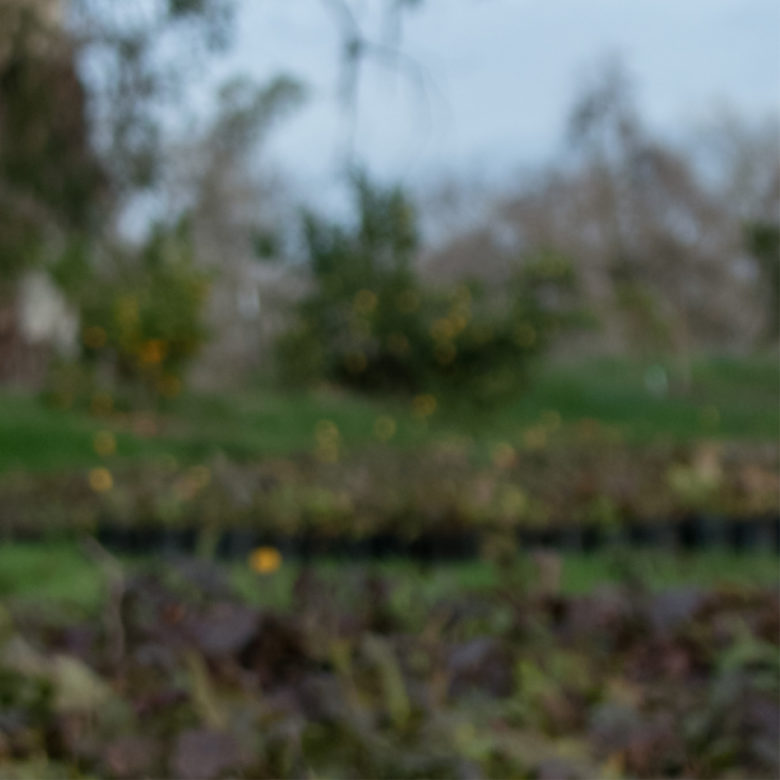





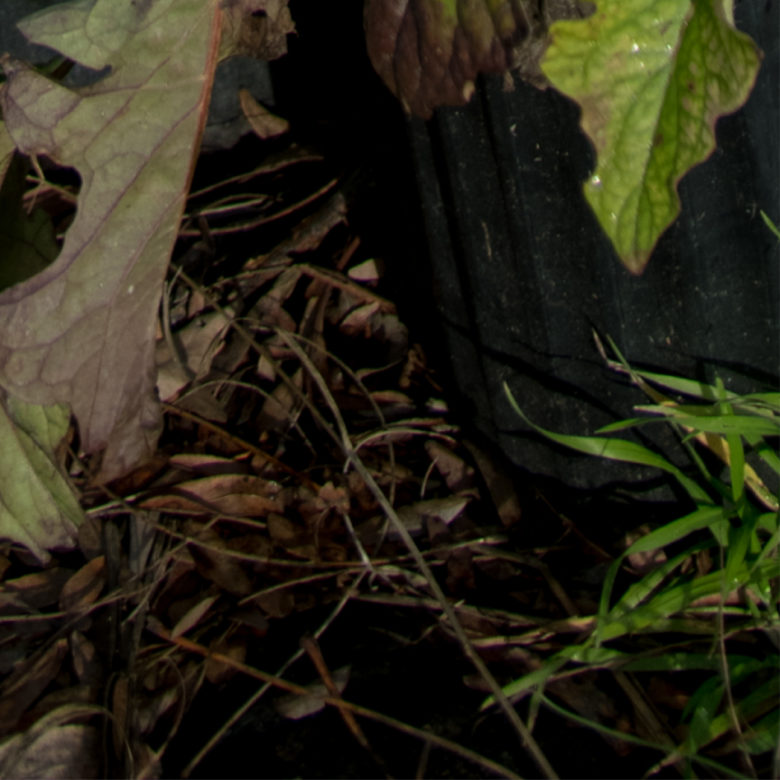
Yolo Press
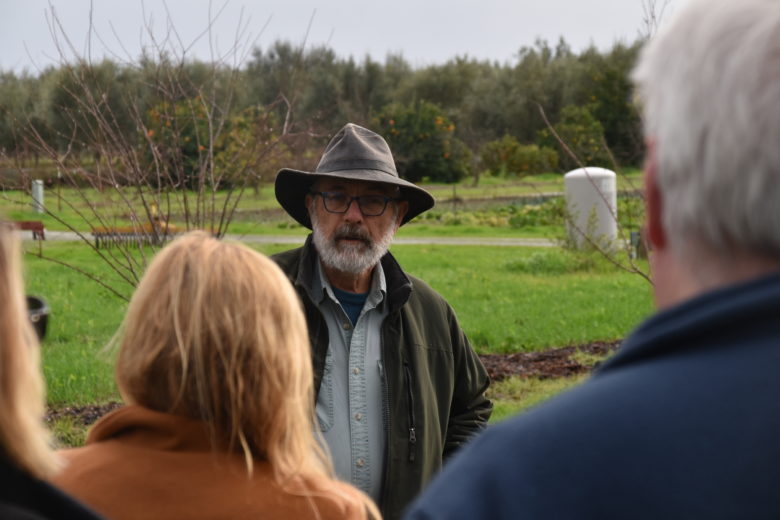
Photo by Steven Baumgartner
In the afternoon, we met with Dr. Mike Madison from Yolo Press Farm in Winters, about 10 minutes west of Davis. He gave us a tour and shared his experience as a late-in-life first-generation farmer of a small farm. The modest 22-acre farm is run by he and his wife Diane. Many of his observations about the changes he has seen in his years as a farmer can be gleaned from the book he wrote as Artist in Bioregional Residence for the Putah Cache Bioregion Project at UC Davis, Walking the Flatlands, in which he discussed their responses to the economic and cultural shifts. Jan Goggans writes in the book’s forward, “Bioregionalism means you are aware of the ecology, economy, and culture of the place where you live and are committed to making choices that enhance them.” Madison aspires to run the farm in a way that demonstrates an equal commitment to the land and to the community.
In an industry that has become highly industrial, Madison explains how small farms like his have survived and in some cases thrived. Local agriculture relies on intense labor, simple technologies, biologically diverse landscapes, and branding with the farmer’s name, marketing itself directly to the consumer and selling products at higher prices. For example, growing tomatoes for canning is mechanized, and the products are sold at a three cents per pound. It requires expensive machinery (close to a million dollars) to grow and harvest and enough land to make it economically viable. Local farms have focused on selling heirloom tomatoes that are labor intensive and sold at farmers markets at three dollars per pound—100 times the price of canned tomatoes. Value-added products such as jams, oils, and dried fruits and grains are also key to improve profits. The benefit to such products is that they can be sold at a higher price for a longer period of time. Madison notes that olive oil-based skincare products are the most profitable component of olive oil. Additionally, some farmers in the area travel great distances through bad weather and Bay Area traffic to sell their products at higher prices—double and sometimes triple those of the Central Valley. Madison explains that while he understands the economic benefit to growing food in one region and selling in another, his philosophy is to not to make money but to be able to provide for his community, so he makes an active decision to nourish the community where he grows his food by selling at the locals farmers markets at reasonable rates.
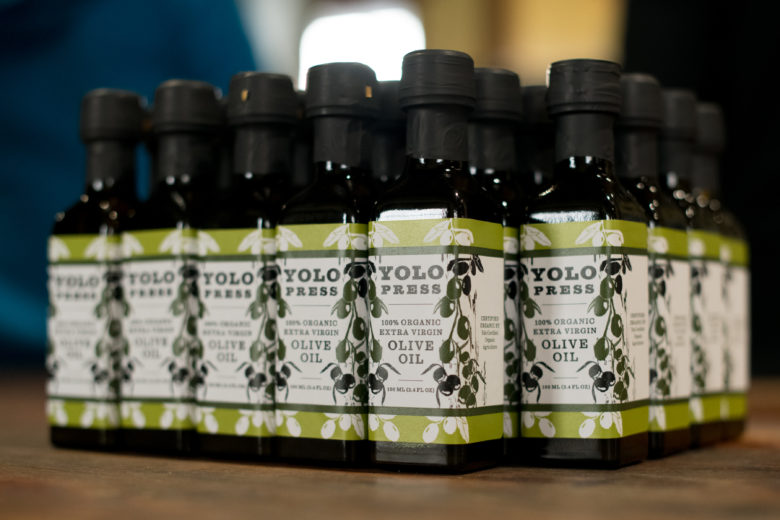
Despite working far more than the 40 hours a week and making less than half of minimum wage, he has no complaints. Madison explains that he has access to good food, good drinking water, and good schools for his kids. He lives far better than most people in the world. While he encourages the younger generation to enter the farming industry, he recognizes the challenges and hurdles. Current first-generation farmers have it much tougher than when he first entered the farming industry over 30 years ago. Land is far more expensive today, and young people today carry significantly more debt. To provide some perspective, when Mike got his land in the 1980s it cost less than $100,000; now it is worth more than $1 million. He advised first-generation farmers to opt for leasing land rather than owning. The second piece of advice he had was to expect lots of failure but to learn from that failure.



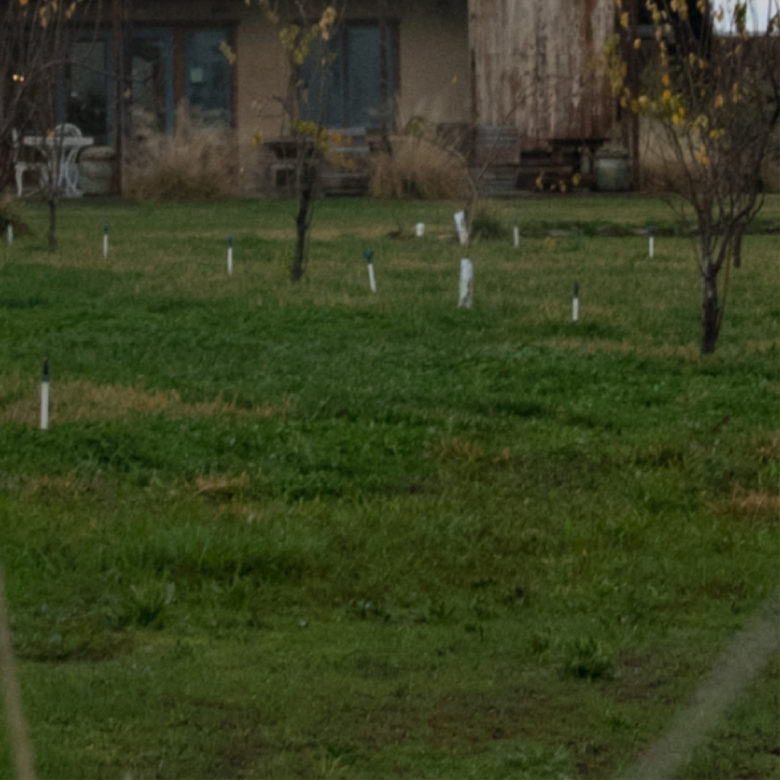


Full Belly
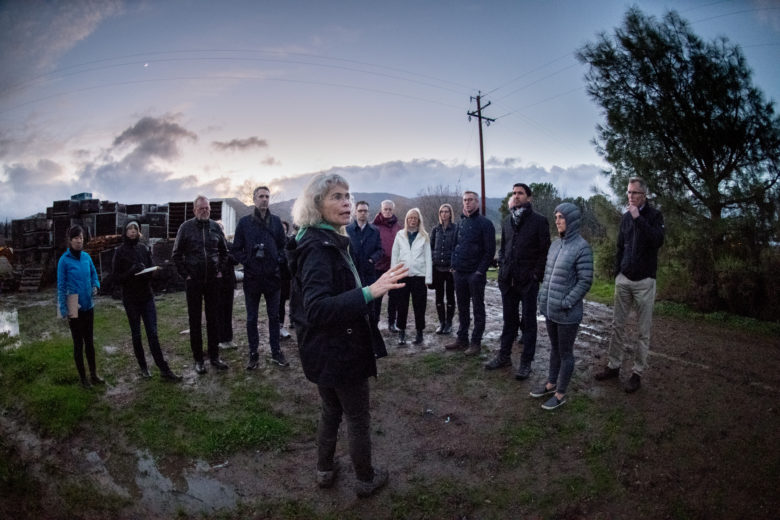
We ended the day with a visit to Full Belly Farms in the Capay Valley—an hour northwest of Yolo Press Farms. It is a 400-acre organic farm owned by Judith Redmond, Andrew Brait, Paul Muller, Dru Rivers, Jenna Muller, and Amon Muller. Among their varied products are herbs and nuts as well as chickens, sheep, goats, and cows. They sell within a 120-mile radius of the farm (which is about a third of California from to the east as far as Truckee, as far north as Redding, and as far south as San Jose). Their Community Supported Agriculture (CSA) projects—programs to purchase directly from farmers—are among the most popular in the area. Redmond, also a board member of CAFF, detailed the various ways that Full Belly practices sustainable farming, explaining that “organic is much, much more than a set of things that we do not use. Organic is a very proactive process.” She detailed the importance of the California Healthy Soils Initiative, a collaborative initiative to research farm and land management practices, increase carbon sequestration, and improve overall soil health. Cover crops were all over the fields to improve soil health, enhance water availability, help control pests, and improve carbon sequestration. The question was posed, “Is there a quantifiable benefit to the cover crops, such as higher yields?” Redmond explained that there are currently no measurable quantifiable benefits, such as economic benefits or crop yields. In fact, she explained, crop yields are typically lower for organic crops. However, she stated that she believes the soil is far healthier and the crops are much more flavorful.
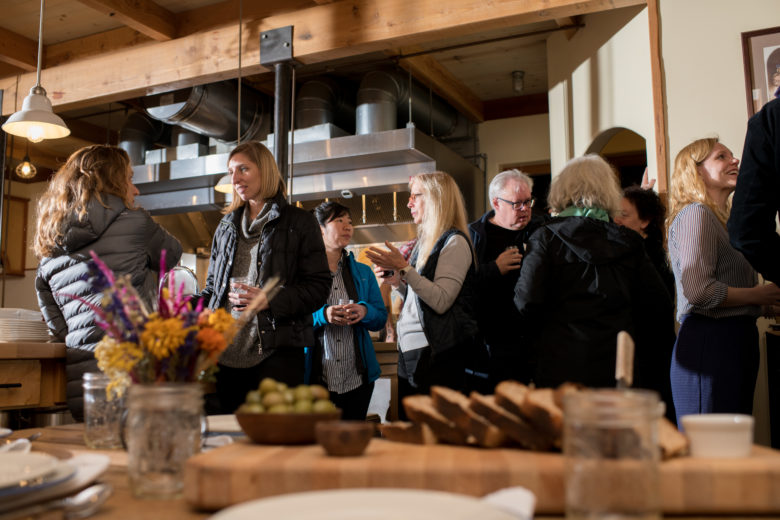
In contrast to Yolo Press, Full Belly urges a higher markup toward a greater investment in food. “We are unabashedly trying to convince people that they should pay more for their food,” said Redmond. Full Belly prides itself on sustainable farming practices such as cage free chickens and hedgerows, but it comes at a price. Their philosophy is that prices should reflect the great deal of time, energy, and resources it takes to produce food. “How much do you think a dozen eggs should cost?” she said. “We sell them for $8 and can sell 80 to 90 dozen at the farmers market. They sell out really fast. The egg yolks are really deep yellow. We feel like we should not even call our eggs ‘eggs’ because they are so good.” Full Belly, like Yolo Press Farms, provides value-added products such as wool, olive oil, and preserves. Additionally, they offer experiences: Full Belly Farm events like the Hoe Down and monthly farm dinners are well known in the community. They also host private events such as weddings and even provided a dinner for the Van Alen Climate Council.
The second day we started out early and headed in the opposite direction, further into the heart of the Central Valley. Our first stop was the Merced County Food Bank, ground zero for food insecurity. Rounding out the day, the Council heard firsthand the experiences of farm workers at the Madera outpost of the United Farm Workers Union, the nation’s first and largest farm workers union. On the way there, we viewed a documentary by Jim Thebaut, Beyond the Brink, which was filmed during the fourth year of the recent California drought. In the movie, Thebaut argues for the need to address the nexus of water, food, and community as a national security issue. Trained as a landscape architect and formerly an environmental planner, Thebaut turned to filmmaking to communicate pressing environmental and social concerns.
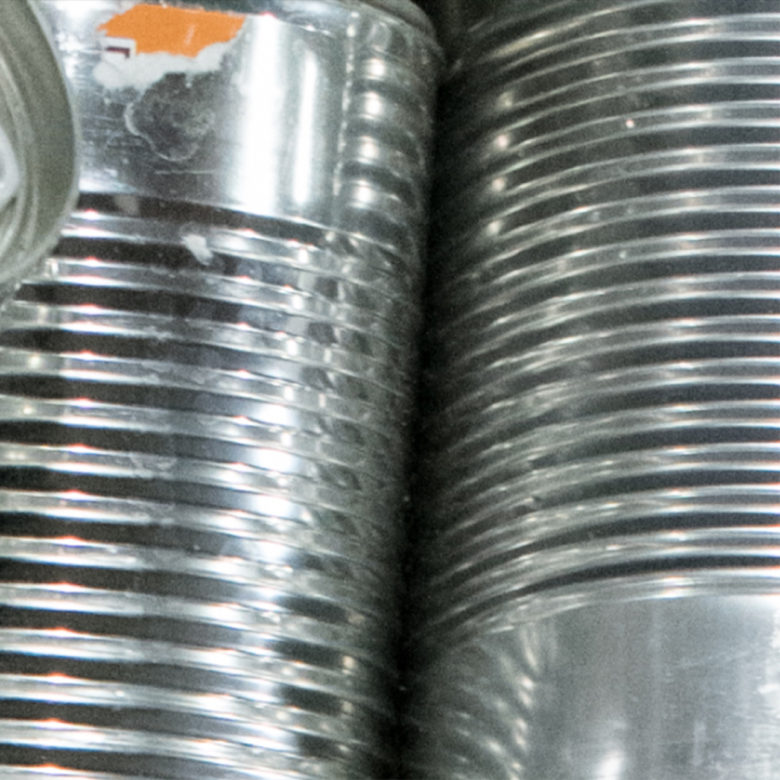

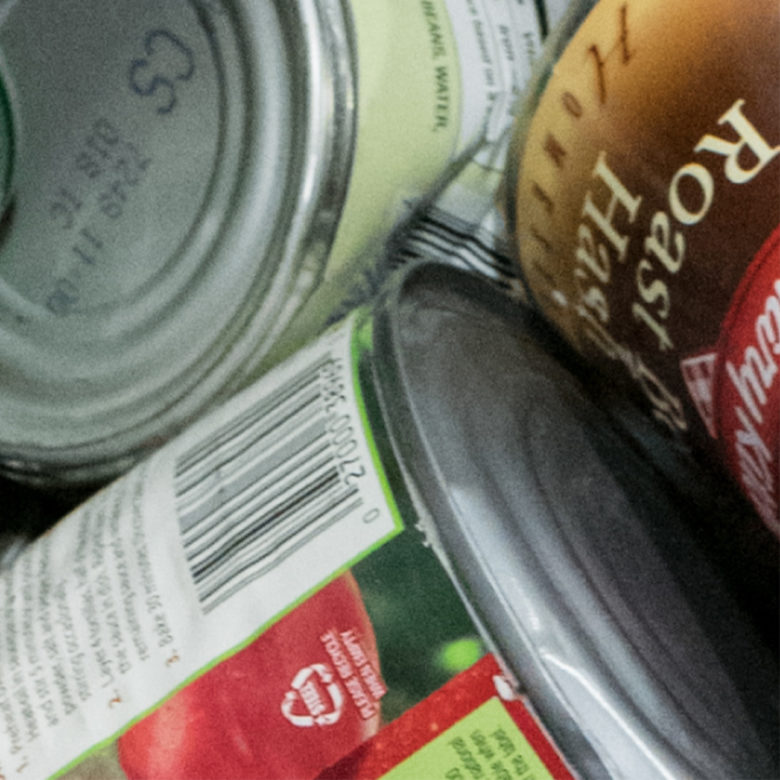

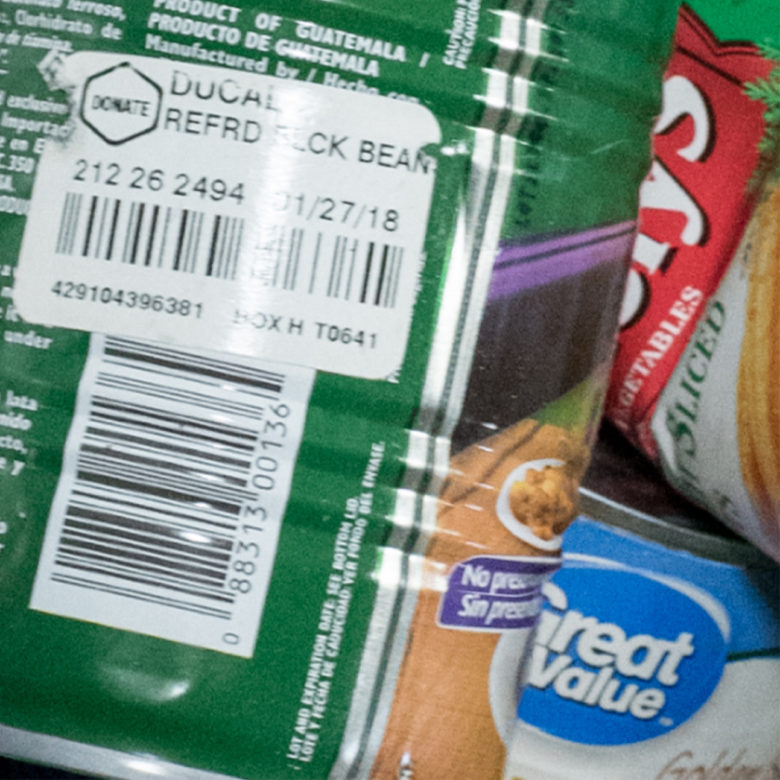

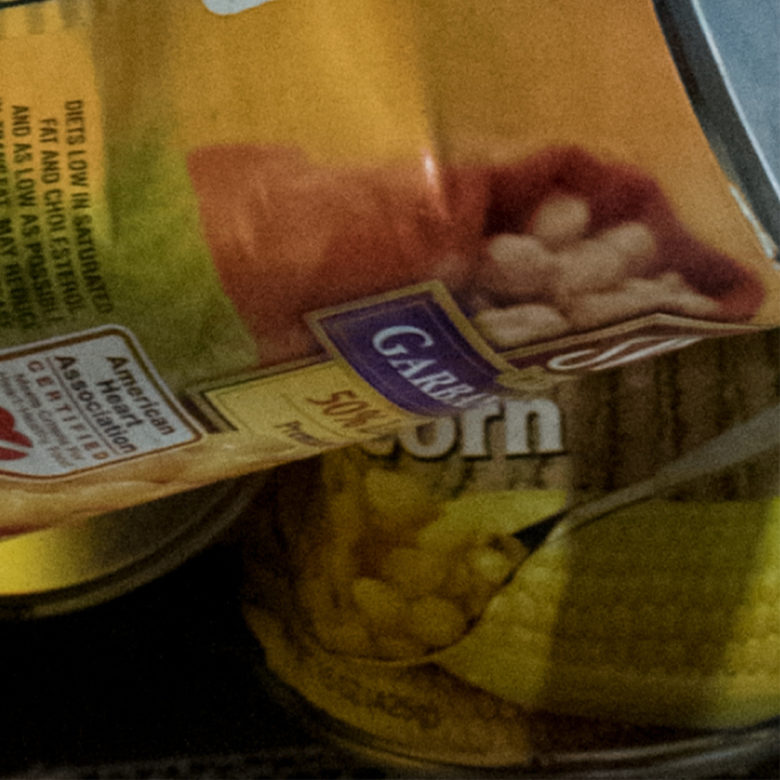
Merced County Food Bank

The Merced County Food Bank (MCFB), the largest food bank in the Central Valley, supplies thousands of tons of food to food pantries all across Merced and Mariposa counties. Food insecurity is defined as a federal measure of a household’s ability to provide enough food for every person in the household to have an active, healthy life. Despite the Central Valley being one of the richest food-production and farming areas in the world, it also has one of the highest rates of food insecurity for families and children. Additionally, a study showed that 45 percent of farmworkers in Fresno County, the country’s most productive agricultural county, are food insecure. The MCFB is part of Feeding America, a network which sets standards for food donation from farmers, manufacturers, and retailers. They receive food from Walmart and Target and local farms such as Bowles Farming Company. At the MCFB, we had a discussion with Bob Gibbs, Merced County Food Bank executive director; Vernette Doty, UC Merced associate director of the Community Engagement Center; Amelia Johnson of the UC Merced Blum Center for Alleviating Poverty and Social Disparities; and Bavneet Kaur, UC Merced Global Food Initiative coordinator. The MCFB’s million dollar annual budget comes mostly from private funders (85 percent) and the remaining from government funding (15 percent). Most of its costs go to overhead such as transportation, employee salaries, and equipment leases. The MCFB relies heavily on volunteers to help; there are 13 staff members and over 2,000 unpaid volunteers.
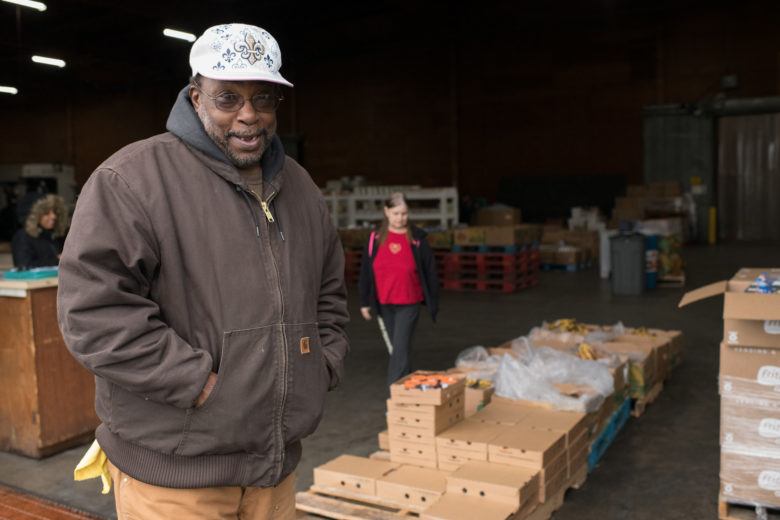
Despite the robust volunteer base, the MCFB does not have enough resources to meet the community’s needs. About 25 percent of the 300,000 population of Merced and Mariposa counties lives under the federal poverty line. Furthermore, 70 to 80 percent of elementary school kids in Merced are on the free meal program. The MCFB is one of 58 food banks in California and serves about 20–25,000 people a month. While the service is important and fulfills a demand, it is not enough to meet the daily nutritional and caloric needs. Gibbs explained that an average family will pick up a single 10–20 lbs bag per month. That’s only 0.3–0.6 lbs per person per day, which is less than half of what is needed per day. In addition to the lack of resources to distribute the food, the lack of consistent and reliable transportation and resources to prepare the food also contribute to food insecurity. Distributing food to pantries requires people to drive the vehicles and funds to purchase fuel. However, with limited funds and availability of people, food does not always get distributed. Food that cannot be distributed is placed outside the food bank daily for anyone to pick up. While healthy food such as fresh produce is welcome, it can be challenging because so much of it is available within a short period of time and has a short shelf life. Foods like processed foods and candies that have long shelf lives offer a different challenge, meeting caloric needs but not always meeting nutritional needs. Another challenge is that once individuals obtain the food, individuals and households may not know how to prepare it or have resources such as kitchens or cooking utensils. Doty, Johnson, and Kaur mentioned that foods like kale and butternut squash would be a welcome addition to some households but a foreign and confusing item for others. Homeless populations, college students, and people with an insecure housing situation may have limited mobility, time, and access to food preparation.



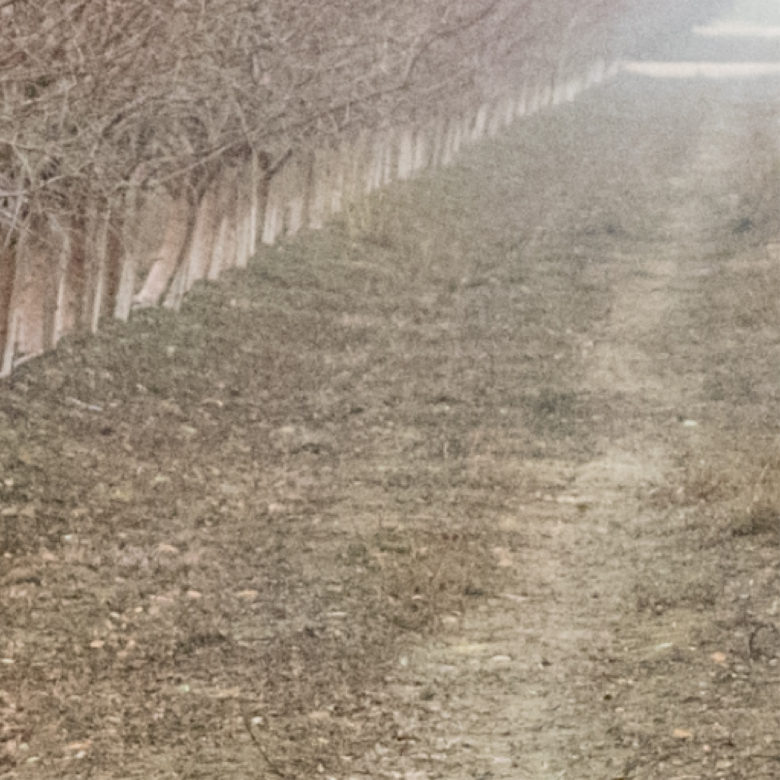



Bowles Farming Company
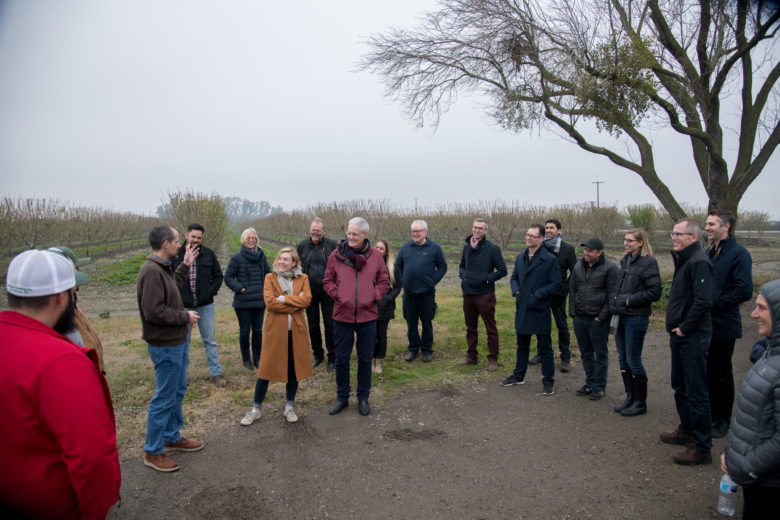
We revisited Bowles Farming Company in Los Banos, located about 30 minutes southwest of Merced. At Bowles Farm, we received a tour from Cannon Michael, president/ CEO of Bowles, and the farm’s maintenance director, and had a fruitful discussion with Derek Azevedo, the company’s vice president; Reyn Akiona, its environmental program director; and Scott Silveira, the Local County Supervisor of Los Banos. As an elected official and former dairy farmer, Silveira had a wealth of information and insight to share about the ag community. Some of the key issues he mentioned were dealing with the increasing population, the pressure to do more with less, and the changing climate. In 2017, Merced County was the fastest growing county in the state due to the comparatively cheap housing prices. Silveira articulated two main concerns of a community growing too quickly in a county without the resources to support the growth. As more people move to Merced, it places more pressure on existing resources that are already strained, such as transportation infrastructure. He described the delicate situation of many residents in Merced County, explaining that over 90 percent of the homes foreclosed in 2008 and unemployment rates are consistently double the national average. Moreover, the amenities taken for granted in the San Francisco Bay Area are not as widely available, and people moving to Merced that still work in the Bay Area may still be using its goods and services, thus not contributing to the local economy. He echoed Bob Earle’s comments that Merced County could benefit from new industries and asked the Climate Council “to see what we’re doing so that you can help spread the good word of the good things going on in Merced County.”
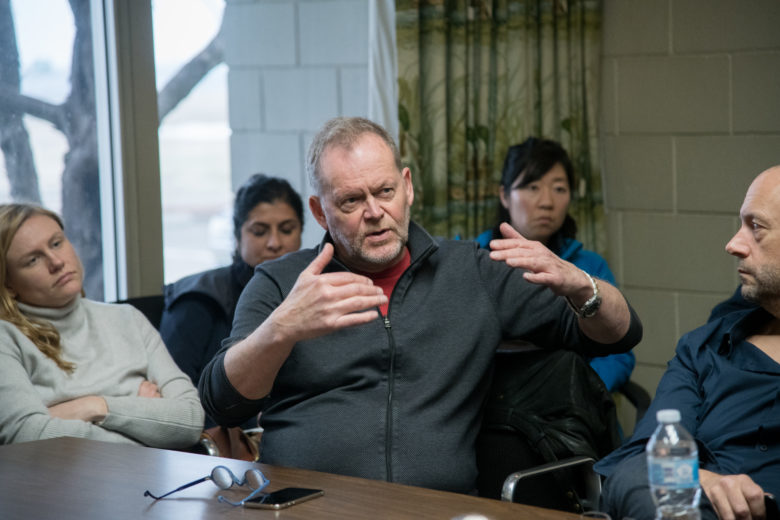
While Bowles, Full Belly, and Yolo Press are completely different kinds of farmers and reach different markets, they all agreed on how the recent industrialization and mechanization of ag changed the way they farm. The cost of new equipment increased significantly, which forced farms to increase yields and sell more value-added products to make ends meet. Yields for most foods like milk, tomatoes, and olive oil have increased significantly in the past 30 years. Additionally, produce and foodstuffs for processing have reduced food loss. In the case of tomatoes, at Bowles Farming, 100 percent of tomatoes for processing are harvested, whereas 50 percent of fresh tomatoes are harvested. Food loss due to the high cosmetic standards for produce is also significant, and Azevedo, Akiona, and Silveira challenged us to think differently about “ugly” produce—pockmarked, imperfect, or oddly shaped agricultural products that consumers often reject in markets as unsightly. They discussed how consumer perception could change toward ugly produce in the same way that consumer attitudes have recently changed to value artisanal foods. Azevedo said that today’s consumer is looking for a trustworthy company that delivers two things: flavor and quality. He cited the example of olive oil production in California, a product that didn’t make economic sense to produce because it is so much cheaper to produce in Europe. However, due to the olive oil controversy in Europe (other oils, such as hazelnut oil were mixed with olive oil and sold as pure olive oil) the market opened up the door for other California producers to provide olive oil.
At the end of our visit Michael and Azevedo gave us a tour of the farmworker housing on Bowles Farm: eight units on the farm, right next to the fields. Michael said that as a society we have to acknowledge that farm work is primarily done by migrant laborers. During the 2008 recession—the worst since the Great Depression—people were foreclosing on their homes left and right, he said. While they were desperate for work, it was still only immigrants that came knocking on his door for a job.







United Farm Workers Union
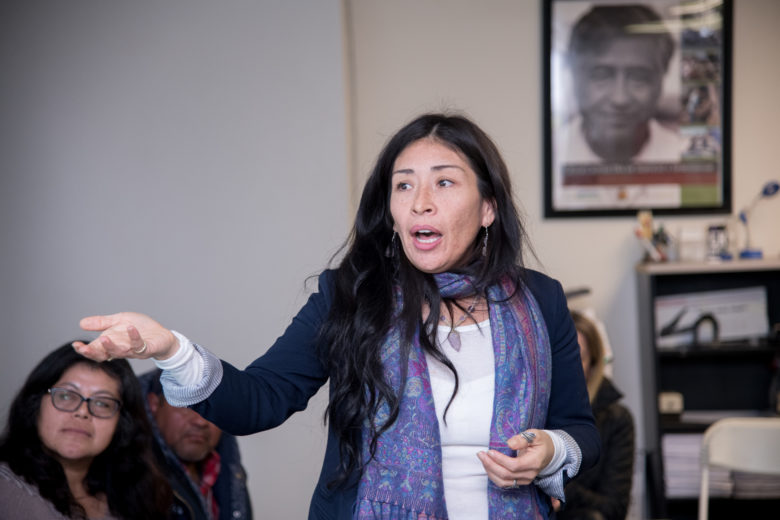
We ended the day by visiting the United Farm Workers Union (UFW) in Madera, 30 minutes south of Merced. Founded by Cesar Chavez, Dolores Huerta, Gilbert Padilla, and other early activists, this pioneering labor organization was formed to help improve working conditions and wages for farmworkers. We met with two UFW staff—Regional Director Antonio Cortes and Organizer Coordinator Lizbeth Valdez—and five members of the union—Agustin, Jesus, Crecencio, Veronica, and Antonio-Cortes. Valdez presented us with the story of a 17-year old Mexican farmworker, Maria Isabel Vasquez Jimenez, who collapsed on May 14, 2008 after working in a vineyard for more than nine hours in the hot sun. The cause of death was a heat stroke. The California Occupational Safety and Health Administration made changes to their heat standards and field inspections, and some farms have started to implement nighttime harvesting. While regulations for working conditions in heat have improved, there are still huge issues for farmworkers in California.
Immigration restrictions, low wages, and difficult working conditions are the greatest challenges that the workers face, all which are exacerbated by the labor burdens of contract work. Cheap and reliable transportation is largely unavailable in the Central Valley, so many farmworkers have to rely on managers to provide rides, some of whom charge $10 per day. Agustin mentioned that while some can afford to purchase a car, for many the ongoing maintenance is too expensive. Other labor burdens are paying for their own tools they use on the farm, such as gloves and knives. In a profession where the job situation is insecure and wages are low with little promise of upward mobility, each additional cost means less income goes toward basic needs like food and housing. Despite an aging farmworker population, fewer people entering the industry, and a need for farmworkers, there have been no wage increases, and progress has been slow in improving working conditions. On top of that, the current administration’s stance on immigration has only further deterred people from entering the industry.
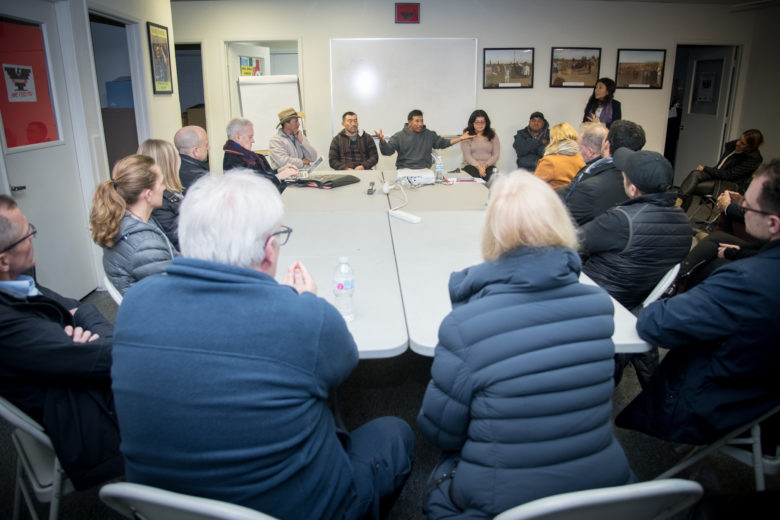
On a personal level, UFM members recounted the deep impact of farm work on their family life. Jesus, who had worked in the fields for 18 years, shared that he had two kids who he hadn’t seen in years. Veronica also shared that she worked well into her pregnancy, alongside other pregnant women in the field. Crecencio mentioned that as a legal resident he offers support to his undocumented friends. Each nodded in agreement when Eleazar mentioned that sometimes the foreman would target undocumented workers for abuse and harassment. Veronica also highlighted that she experienced sexual discrimination and harassment in the field from her employers. Research and policy change on farm working conditions and health has been ongoing, but passing policy and implementing changes and practices on the ground is slow, and once passed, the changes are not always widely enforced. The impacts, meanwhile, can be long-lasting. For example, pesticide regulations have greatly improved working conditions for farm workers, but toxic pesticides are still being used on certain farms, having an intergenerational impact on farmworker communities.
At the end the discussion, Veronica said, “Next time you see a bowl of salad, think of us.” Of course we will.


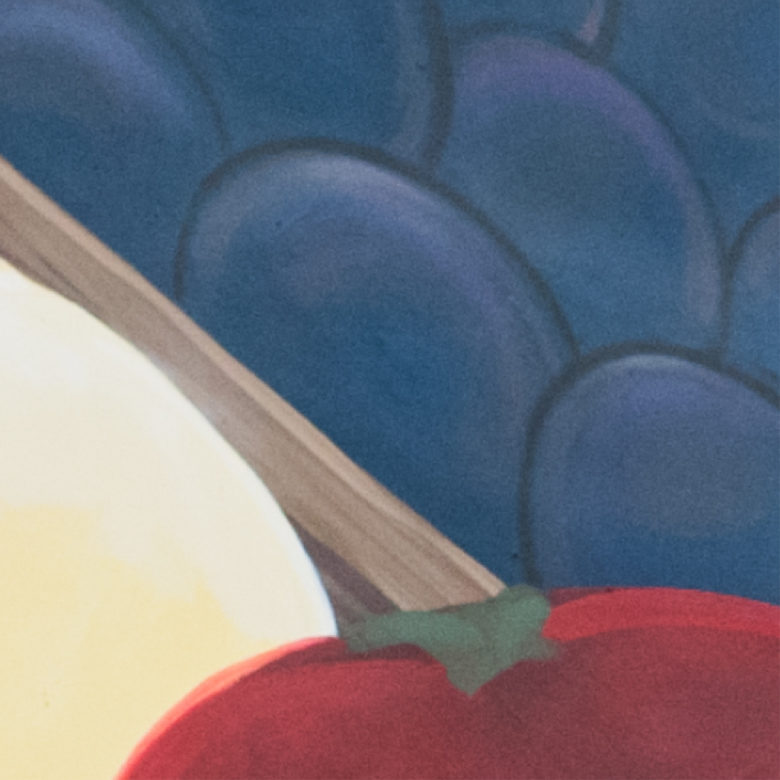




This trip brought us a little closer to understanding how people are impacted in the industrialized food system and seeing opportunities for design to celebrate the culture of food, utilize technological and anthropological solutions to improve the food system, and create resilient communities in the face of climate change. A discussion on the last day of the trip helped bring the trip to a close by identifying four themes for creating opportunities to advance sustainable food-systems solutions: Change People’s Perception of Food; Promote Alternative Industries; Imagine Predictable, Resilient Systems; and Connect People and Culture.
Create opportunities to Change People’s Perception of Food by celebrating and educating them about local food and culture. Throughout the trip there were lots of conversations about the changing culture and perception of food. All three farmers we visited mentioned the growth of the artisanal food industry and the desire to learn more about where food comes from, how it’s made, and where it goes. The group found that there are ways to ride the wave of shifting perceptions of food through:
- Stories – Humanizing farmers and farmworkers through first-person stories and by including them in CSA boxes or olive oil bottles, for instance by distributing Farmer Trading cards.
- Education – Partner with schools—elementary to university—to create spaces and times for creative entrepreneurship and the employment of food and food waste to celebrate local knowledge, culture, and cuisine.
- Messengers – Using marketing to educate about food, for instance by asking local political figures to convey information, and challenge assumptions about ugly produce, wildlife, and healthy foods.
- Metrics and Data – A metric that can quantify social impacts of organic foods and community health that have otherwise been ignored.
Promote Alternative Industries through investing in tourism and technology. There is a need for businesses and communities to reinvent themselves to survive and thrive. The Central Valley has a beautiful landscape, compelling history, and amazing food that is supported by farmers, farmworkers, and others in the ag industry. These assets present an opportunity for the Central Valley leverage its cultural richness and attract tourism and other businesses, bringing additional wealth and revenue into the community.
- Agrotourism – High-end artisanal tourism can help brand the food and educate the public, using distinct products like cantaloupes in the same way Napa Valley has done with wine.
- Branding – Using the name Los Banos (“the baths”) to promote and celebrate the water system that enables food production.
- Knowledge – Bringing people to the area by sharing expertise and specialized knowledge about processes like food waste management, redistribution, and reuse.
- Technology and Innovation – Create or partner with tech startups to develop food loss software (CropMobster to redistribute food loss) or food desert car shares (Lyft Grocery Access program).
- Industrial design – Tools and equipment like clippers can be improved to make them easier to use and longer-lasting for farm workers.
Imagine Predictable, Resilient Systems by creating better housing, providing community resources and sustainable and reliable transportation, developing resilient practices, and passing regulatory change.
- Regulatory change – Changing policy to improve housing, waste management, and transportation access and maintenance.
- Transportation – Provide affordable transportation systems for communities, such as a car share system for farm workers and rides to and from food banks.
- Resilient practices – Work with designers and ecologists to tweak landscape, mitigating wind damage (hedgerows).
- Labor resources – Provide affordable and mobile refuge stations for farm workers.
- Housing – Mobile, flexible housing and zoning for greater density.
- Community resources – Create infrastructure and resources to help the community, such as a community center with expanded child care.
Provide spaces to Connect People and Culture by creating networks and physical spaces to bring people together in appropriate cultural areas. There is generally a feeling of stress experienced by farm owners, farmworkers, and the community. Farmers feel increasing pressure to optimize yields and be more efficient under changing climate conditions, and workers have incredible physical, environmental, and political stressors that impact their quality of life. This presents opportunities to create collective, shared experiences and build community based on the process of farming.
- Community Space – Create a physical community center that can be used by all members of the community, including farmers, farmworkers, and teachers, and provide spaces to celebrate and learn through food like community kitchens in New York.
- Existing facilities – Examples like the soccer fields at Bowles Farm provide a physical space where festivals and gatherings can take place, such as a family day that celebrates the community of farmers and farmworkers.
While the trip to the Central Valley represents the culmination of the Van Alen Climate Council’s research on food as a topic for its investigation of design and policy opportunities in relation to climate change, this has not stopped members from using the connections and knowledge acquired during this trip to move the conversation forward, and some members will be presenting conclusions from this trip, lessons learned, and design opportunities at ASLA in San Diego this November.
LIST OF CLIMATE COUNCIL PARTICIPANTS
Claire Weisz (WXY Studio)
Mark Yoes (WXY Studio)
Bry Sarté (Sherwood Design Engineers)
Erik Verboon (Walter P Moore)
Mark Johnson (Civitas)
Steven Baumgartner (SmithGroup)
Todd Kohli (SmithGroup)
Chris Reed (Stoss Landscape Urbanism)
Barbara Wilks (W Architecture & Landscape Architecture)
Elissa Black (Van Alen Institute)
Jared Della Valle (Alloy Development, Van Alen)
Amy Whitesides (Stoss Landscape Urbanism)
Pamela Conrad (CMG Landscape Architects)
Rupal Sanghvi (HealthxDesign)
William Menking (The Architect’s Newspaper)
Gary Sorge (Stantec)
LIST OF WORKSHOP PARTICIPANTS
Gail Wadsworth, Executive Director, California Institute for Rural Studies
Mark Cooper, Assistant Professor, UC Davis Department of Human Ecology
Austin Brown, Executive Director, UC Davis Policy Institute for Energy, Environment, and the Economy
Ned Spang, Assistant Professor, UC Davis Department of Food Science and Technology
Doreen D’Adamo, Member, State Water Control Resources Board
Lynn Sosnoskie, Agronomy and Weed Science Advisor, UC Merced County Cooperative Extension
Sara Tiffany, Community Alliance with Family Farmers
Kyle Pogue, Environmental Program Manager, CalRecycle
Martine Boswell, Environmental Scientist, CalRecycle
Mayra Sanchez, PhD Candidate, Geography Graduate Group
Marc Schenker, Distinguished Professor, UC Davis Department of Public Health Sciences
Bob Segar, Associate Vice Chancellor , UC Davis Campus Planning and Environmental Stewardship
Mekdem Wright, MBA Candidate, UC Davis Center for Regional Change
John T. Andrew, Assistant Deputy Director, California Department of Water Resources
